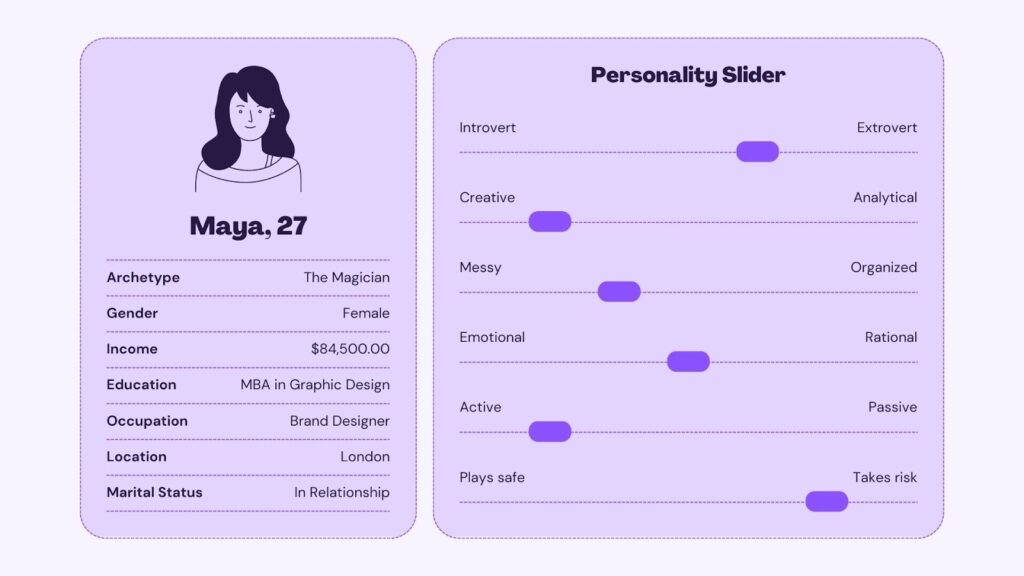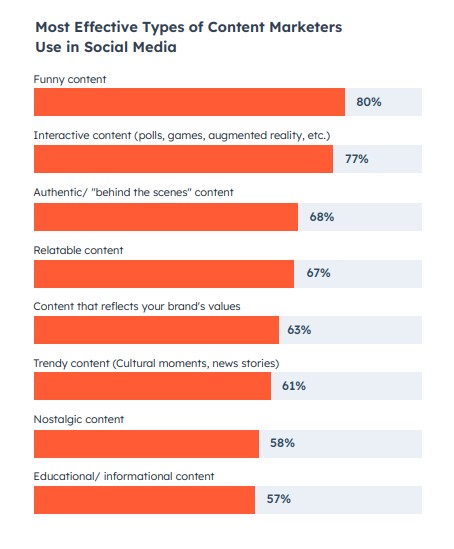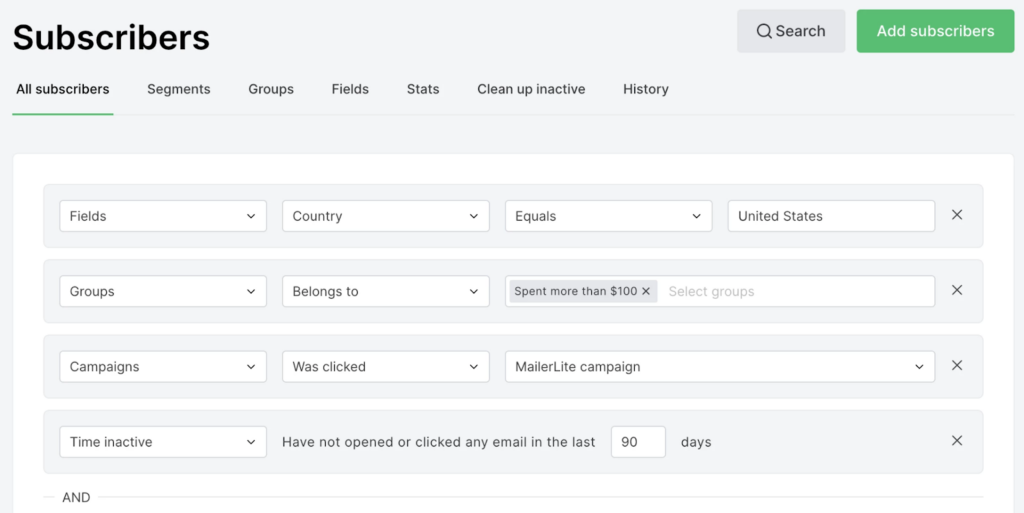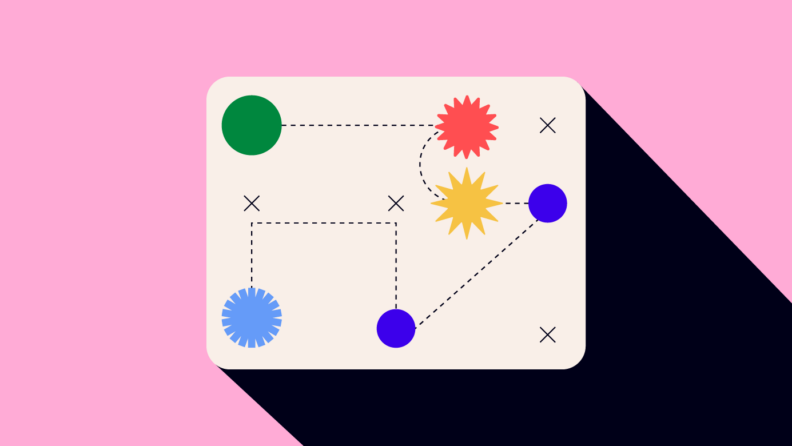Marketers are impatient. We want results fast, making it easy to get distracted by new tactics and shiny objects. But sticking to a well-defined strategy is key—and according to research by CoSchedule, digital marketers who follow a carefully-documented plan are 313% more likely to report success.
As a digital marketing specialist who’s worked with dozens of businesses, I’ve seen the impact of good and bad strategy on outcomes. In this article, I'll share my insights on how to build an effective digital marketing strategy that boosts your brand, engages your target audience, sets you apart from your biggest competitors, and increases your bottom line.
What Is Digital Marketing?
Digital marketing encompasses any promotional activities that happen on digital channels like search engines, websites, social media, email, mobile apps, and other emerging technologies. Marketing software helps to manage this.
Before the arrival of the Internet and internet marketing, the term “marketing” referred to promoting products and services through traditional methods like billboards, print ads, and radio ads. As the world became increasingly digital, the term “digital marketing” now distinguishes between online and offline.
How To Build Your Digital Marketing Strategy
Creating a digital marketing strategy can be overwhelming. To make it easier, follow a process. From setting SMART goals to choosing tactics that work, the following steps take you through everything you need to know to win.
1. Set Your Business Goals
Before you start throwing money at marketing, think about what you need to accomplish. Ultimately, you’re developing a marketing strategy because you want to grow your business. But what does that mean, precisely?
Common business goals include:
- Profit: For all businesses, profit is important. Some customers aren’t profitable, so acquiring them is a waste of time (or a net negative).
- Revenue: For some businesses—startups, for example—top-line revenue growth is another important consideration, especially if an acquisition is on the horizon.
- Lifestyle: For small businesses, freelancers, and solopreneurs, lifestyle considerations may also come into play. Your digital marketing strategy is a chance to nudge your business’s growth in a direction that feels satisfying to you. This might mean being hyper-specific about the kind of potential customers you attract.
Once you know the direction you want to steer your business in, design goals that are SMART (Specific, Measurable, Achievable, Relevant, and Time-bound). For example, instead of a goal like “increase sales," set a goal like "increase online sales by 20% in the next six months."
2. Research Your Target Audience
Once you’ve identified your ideal customers, learn as much as you can about their psychology and behavior. This will help you create customer personas, which are fictional representations of each segment of your target audience.
For example, imagine you're a fitness app developer. One of your buyer personas could be "Maya," a mid-twenties professional who wants quick, effective workouts to fit her hectic schedule. By distilling the characteristics of your audience into a specific persona, you’ll be able to design marketing campaigns that resonate.

3. Evaluate Existing Assets
Before you start creating new marketing assets, take a look at your marketing performance and figure out what’s working—and what’s not. For example, you might find that your social media posts are generating high impressions, but that more conversions are coming from your organic traffic.
Once you have a grasp on the type of content that’s getting results for you, review your existing marketing materials. You might be surprised at how much of your content can be repurposed to fit into your new strategy.
You can:
- Expand blog posts into whitepapers
- Turn emails into social media posts
- Transform videos into podcasts
Based on this exercise, you’ll have a good sense of the kind of marketing campaigns that make the most sense.
4. Select Your Digital Marketing Tactics
To choose your digital marketing tactics, start by considering your product and audience. For example, if you’re selling ecommerce products to teenagers, TikTok might be a strong performer for you. But for B2B SaaS companies, paid ads or LinkedIn might be a better fit.
While there isn’t a magic formula to help you allocate your digital marketing budget, it can be helpful to see what other marketers do. Here are the tactics most CMOs focus on, according to a 2022 Gartner survey:
| Marketing Tactic | Percentage of Budget |
|---|---|
| Social ads | 10.1% |
| Search ads | 9.8% |
| Digital display ads | 9.3% |
| Digital video ads | 8.8% |
| SEO | 8.5% |
| Digital audio ads | 8.1% |
| Email marketing | 7.8% |
| Content and messaging | 7.8% |
| Organic social and influencers | 7.6% |
Of course, just because CMOs are putting more budget toward certain tactics doesn’t mean those options would be the most effective in your case. Each tactic needs to be considered within the context of your audience and market for maximum impact.
5. Plan Your Marketing Campaigns
With your digital marketing tactics in place, it's time to plan your campaigns. Get as specific as possible here. Outline each campaign's budget, resources, timelines, deadlines, distribution channels, and creative assets.
To keep your campaigns on track, develop a content calendar that schedules and manages your marketing efforts. Make sure you evaluate any marketing tools that might make your life easier. Social media marketing automation, for example, can handle everything from content creation to analytics to scheduling posts.
You may also benefit from organizing your marketing campaigns with Gantt chart or a similar project management tool, especially if you’re coordinating with other marketing team members.

6. Select KPIs to Measure Success
Many businesses aren’t sure what success looks like for their marketing strategy.
As a digital marketer, I’ve often seen business owners use website traffic as the barometer for how well their marketing strategy is going. But in most cases, website traffic ends up being what’s known as a “vanity metric”—it looks nice, but it doesn’t contribute to the bottom line.
That’s why setting meaningful key performance indicators (KPIs) is important. Before kicking off your marketing campaigns, decide which KPIs most directly relate to your business goals. Then, measure them.
Common KPIs include:
- Conversion rate
- Cost per acquisition
- Engagement rate
- Cost per lead
By keeping a close eye on your KPIs, you'll understand whether what you’re doing is working or not—and if not, how to pivot your strategy.
10 Essential Digital Marketing Tactics
From content marketing to paid ads to social media, your digital marketing strategy is sure to consist of at least a few of these types of digital marketing.
Content Marketing
If you’re looking to educate your customers and build relationships with them over time, there’s no better tactic than content marketing.
Content marketing includes diverse formats like:
- Blog posts
- Infographics
- White papers
- Social content
- Case studies
- Webinars
- Podcasts
- Ebooks
- Videos
By producing engaging, helpful content, you can not only attract and retain your audience but also establish your brand as an authority.
Keep in mind that the “voice” you adopt for your content marketing has a big impact on the relationship you create with your audience. For example, Old Spice has trained its audience to expect funny content. According to HubSpot, the most effective content tends to be funny, authentic, or relatable.

Search Engine Optimization (SEO)
Even in today’s world of social media and artificial intelligence, SEO is still dominant. 68% of online experiences begin with a search engine. That means businesses that ignore SEO do so at the expense of their growth.
There are plenty of SEO tactics you can explore, but most of them boil down to two things:
- Content
- Backlinks
Start by focusing on creating world-class content that resonates with your target buyer. Do some keyword research to confirm there's interest in the topic and eventually, your content will generate backlinks on its own. If you need to create more exposure, reaching out to digital media outlets to get coverage for your brand can speed up your content’s visibility in search engines.
Remember, SEO is a marathon—by continually creating valuable content, you’ll naturally attract more traffic over time.
Social Media Marketing
According to a 2022 HubSpot survey of over 1,600 marketers, the single most effective channel for acquiring customers is social media.
The challenge for marketers is that it’s easy to waste time on social media vanity metrics like impressions and follower count. Or, you might end up focusing on a social platform that doesn’t align with your audience.
Choose your social media platform carefully. But once you do, go all in.
For example, if you’re a direct-to-consumer brand, Facebook, Instagram, and TikTok all have potential. For b2b, LinkedIn is your best bet. Post consistently, showcase your brand’s unique personality and make sure you understand each platform’s unique expectations for how brands engage their audiences.
Influencer Marketing
Influencer marketing isn’t just for accounts with hundreds of thousands of followers. More and more, brands are partnering with nano and micro-influencers—even those with just a few thousand followers.
Take Daniel Wellington, a watch brand, for example. The company was able to sell one million watches in three years largely by working with Instagram influencers. Daniel Wellington’s main strategy was to give away free watches to influencers, but the brand also engaged regular Instagram users heavily as a strategy to curate user-generated content.
By partnering with influencers, you can borrow an established audience, benefit from meaningful social proof, and accelerate your growth.
Affiliate Marketing
In an IAB survey, 84% of marketers reported that affiliate marketing had a higher ROI than most other marketing channels. Here’s how it works:
- Affiliate partners promote your product to their audience for a commission.
- Affiliates only receive a commission when they generate a sale.
This makes the cost of acquiring new customers more predictable. Instead of a cost-per-conversion that varies widely based on ad costs, affiliate conversions make it easy to stay ROI-positive.
Consider reaching out to creators or brands with a relevant audience and ask if they’d be interested in an affiliate partnership. You can also join an affiliate network, which expands the pool of partners who can apply to work with you.
Email Marketing
Email has something that most digital marketing channels don’t: The ability to contact customers again and again.
Email marketing’s advantage is that it lets you establish a relationship with your customers over time, and do it within the confines of their inboxes—a less distracting environment than Facebook or Google, to be sure.
The ability to reach your audience multiple times means you can nurture leads into customers. You can also turn one-time customers into repeat buyers.
Another advantage of email is automation and segmentation. Email marketing software lets you personalize your communications based on each subscriber’s interests and behavior. For example, you can send emails only to customers:
- Who are located in a specific country
- Who have spent more than $100 on your products
- Who have never opened one of your emails before

Pay-Per-Click (PPC) Advertising
When you need results that are fast and scalable, paid ads are the way to go. Enabling Pay-Per-Click (PPC) ads can be like flipping on a light switch—they can start driving traffic, conversions, and sales immediately.
A key advantage of paid advertising on search engines—like Google Ads—is search intent. For example, let’s say you’re a plumber. Paid ads provide the opportunity to get in front of people in your area who have an immediate need for a plumber.
Social media paid ads can’t connect you with customers based on organic search intent. However, they have another powerful tool: data. Social media platforms leverage their demographic and behavioral data to let you reach your precise target demographic.
The challenge with paid ads is to deploy them profitably. It’s easy to burn through your marketing budget fast using paid advertising, especially if you’re not carefully optimizing your campaigns.
Earned Media Marketing
Earned media marketing lets you gain exposure for your brand without spending a dime on advertising. And—even better—92% of consumers trust earned media more than any other form of advertising.
Press coverage, guest articles, and podcast appearances are examples of commonly earned media outlets. As you gather more media exposure, the effects can start to snowball. Earned media marketing is an especially effective strategy when you’re working with a limited budget.
The author James Clear, for example, did 100 podcast interviews in a single year when he launched his book Atomic Habits. He arranged for all of the interviews about success habits to be published within the first month of the release. Now, Atomic Habits has sold over 10 million copies—and James Clear’s earned media appearances were essential to the success of the book’s launch.
Inbound Marketing
Inbound marketing is all about attracting customers by providing valuable content.
Start by developing buyer personas to understand your audience. Then, create a strategic digital marketing plan around content that addresses your audience’s pain points and questions.
Over time, your audience will see your brand as an authority, and—when they’re ready for your product—you’ll be in a strong position to generate a sale.
By using marketing software features like automation and tagging, you can track how individual users are engaging with your content and create workflows that nudge them along the customer journey.
Account-Based Marketing (ABM)
Account-based marketing (ABM) is about quality, not quantity. Rather than seeking to reach the largest possible audience, an ABM approach means using personalized digital marketing campaigns for individual, high-value accounts.
Here’s how ABM works:
- First, marketing teams work with sales teams to prioritize key accounts.
- Then, they develop personalized messaging and content.
By delivering ABM tactics and messaging that speak to the precise needs of specific customers, you can improve your odds of higher-value sales.
Marketing Strategy vs Marketing Campaign
Before I leave you, let me make this distinction. Marketing strategy is like sheet music in an orchestra. It provides a comprehensive vision, and, when executed well, leads to a successful outcome. Marketing campaigns, on the other hand, are like individual musicians in an orchestra. Each contributes to the goal.
For your marketing strategy to work, it needs to be well-informed. Successful marketing strategies are built on extensive market research, competitive analysis, real-time data, and deep knowledge of the target audience.
Once you have those building blocks in place, you can launch marketing campaigns that target specific subsets of your audience on a variety of channels, like social media, email marketing, or digital advertising.
Unlocking Your Digital Marketing Potential
If you’re currently managing campaigns without a strategy in place, let this be your wake-up call: You need a digital marketing strategy ASAP.
By taking stock of your current marketing activities, reviewing what is (and isn’t) working, and aligning your strategy with your business objectives, you’ll make all of your future marketing campaigns more effective—and lay the foundation for sustained business growth.
To stay in the loop on the world of digital marketing, subscribe to The CMO newsletter so you don't miss out on the latest marketing strategy, trends, technology, and tools.


